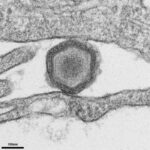GPCRs comprise the largest family of signaling receptors and control essentially every physiological process. Many biochemical reactions underlying GPCR signaling are now elucidated to atomic resolution in cell-free preparations, but how elemental signaling reactions are organized in intact cells remains less clear. Significant progress has been made toward bridging this knowledge gap by leveraging new tools and methodologies enabling the experimental detection, localization, and manipulation of defined signaling reactions in living cells. Here, we chronicle advances at this rapidly moving frontier of molecular and cell biology, focusing on GPCR-initiated signaling through the classical cAMP pathway as an example. We begin with a brief review of established concepts. We then discuss the still-evolving understanding that ligand-induced GPCR signaling occurs from endomembranes as well as the plasmalemma, and that this enables cells to flexibly sculpt downstream signaling responses in both space and time. Finally, we note some key limitations of the present understanding and propose some promising directions for future investigation.







No Comments
Leave a comment Cancel